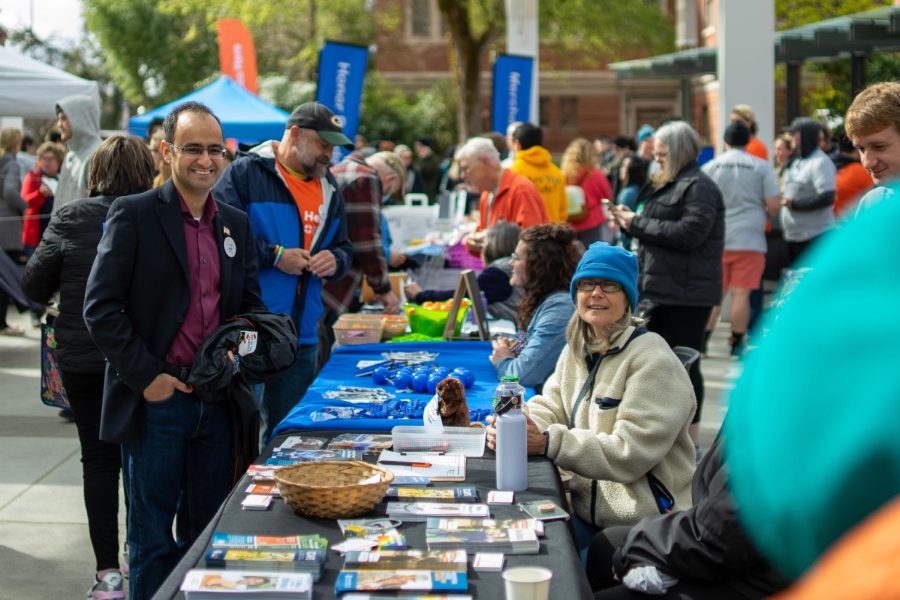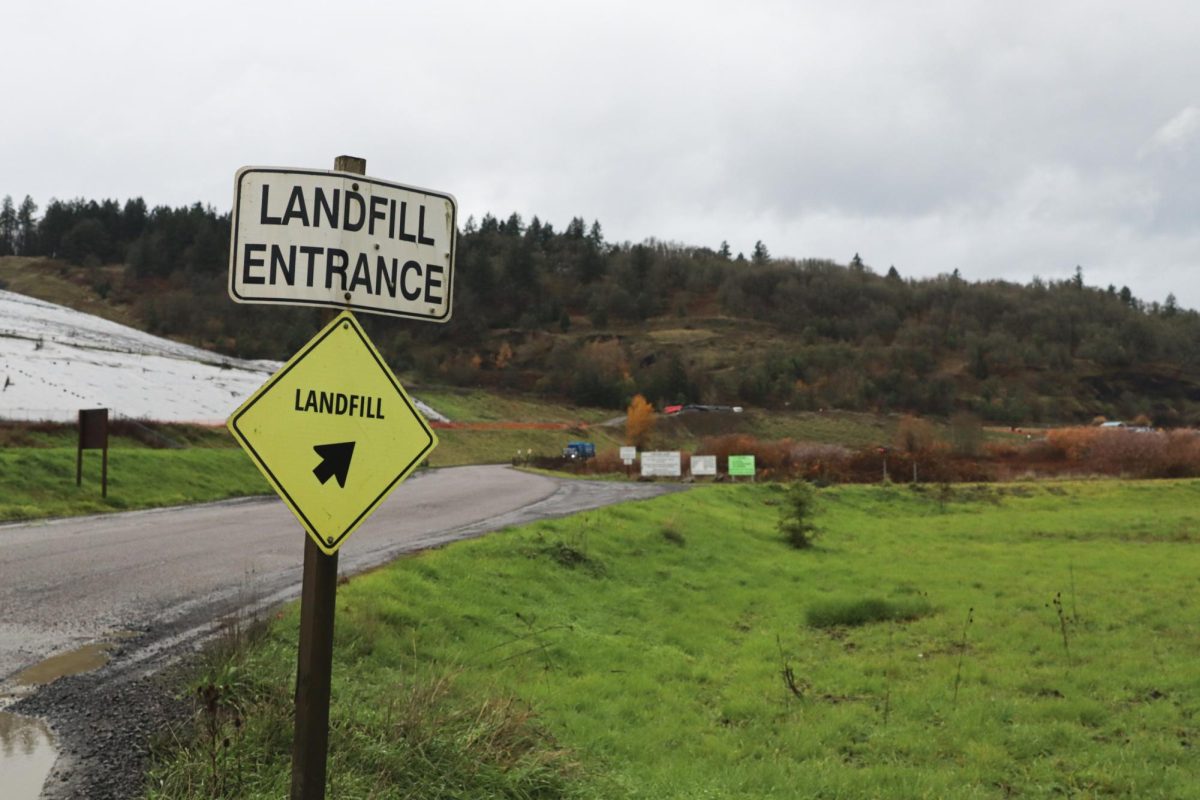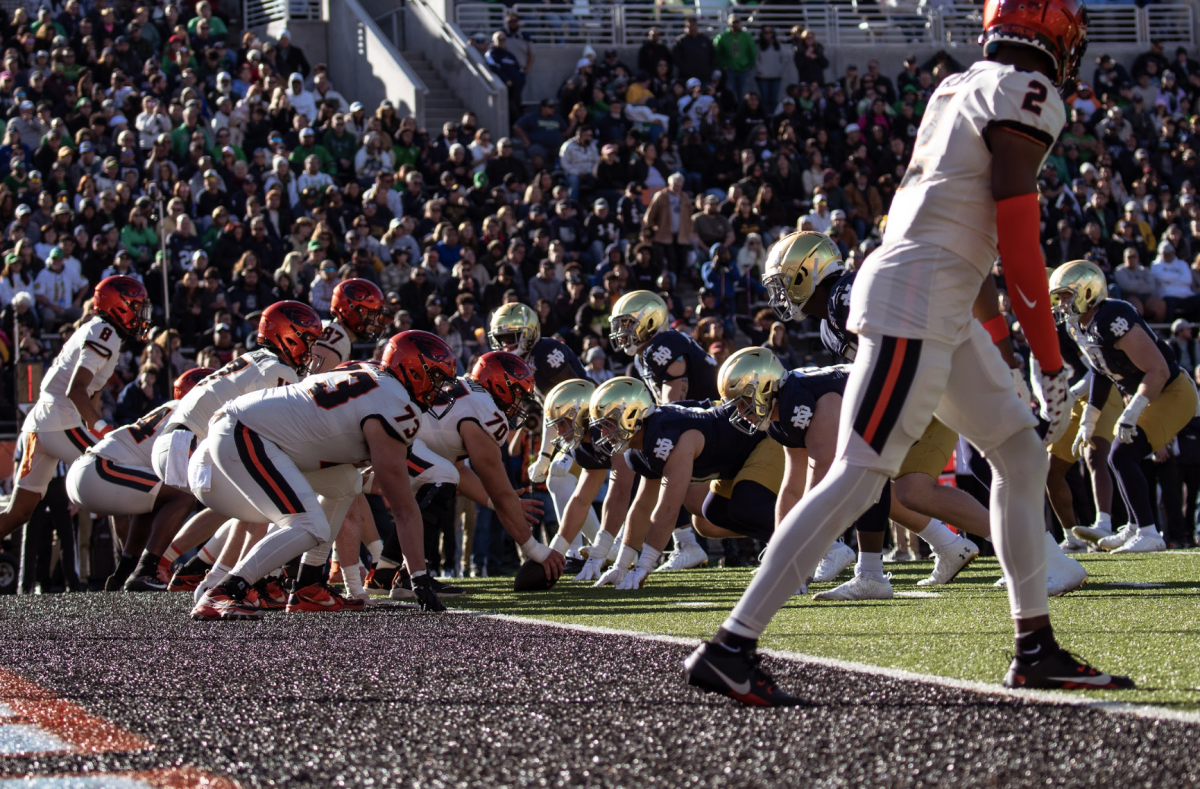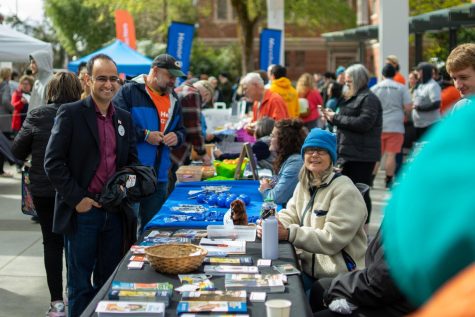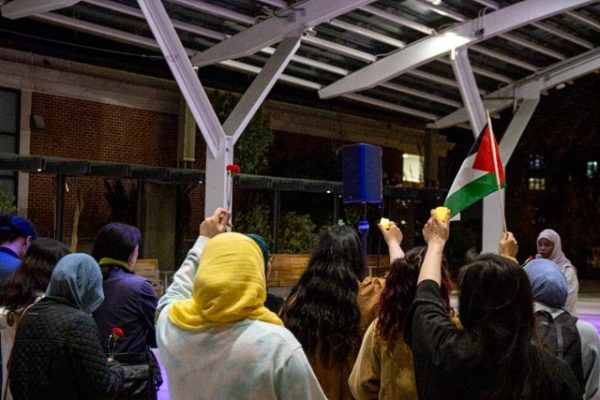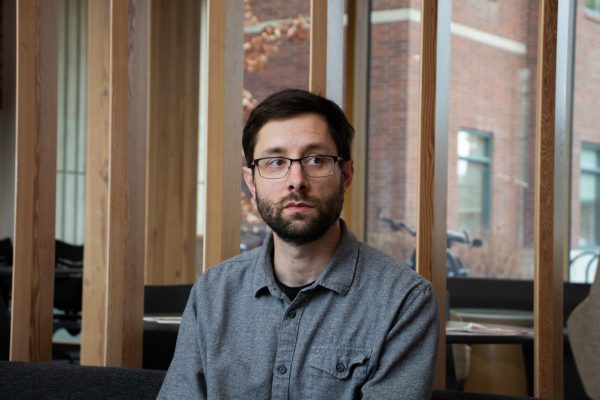Fistulated cow provides educational opportunities
October 9, 2017
College of Veterinary Medicine utilizes large animal herds for research, firsthand experience for students.
On the west side of Oregon State University’s campus, grazing quietly in one of the College of Veterinary Medicine’s many pastures, is a cow who is unlike your average dairy cow. C-Cow, as she’s known by the students and faculty, is a fistulated cow, meaning there is a plastic cannula in her side, opening a window into one of her four stomachs. She is, quite literally, a “hole-y” cow.
Despite the obvious hole in her side, C-Cow leads a normal life and enjoys all the activities of a normal cow, according to Lyn Smith-Gloria, the media and communication director for the College of Veterinary Medicine.
“It doesn’t have any impact at all. We do monitor her just to make sure that the cannula is clean and in place and capped and so forth, but other than that, she’s a regular cow,” Smith-Gloria said.
The digestive fluid found in her stomach, which is rich in bacteria and nutrients, can be used to treat other cows and calves who come into the veterinary hospital with digestive issues, according to Smith-Gloria. C-Cow also aids in the college’s outreach, allowing fifth and sixth graders in the Adventures in Learning program to look inside her stomach to learn about livestock and digestion.
Another feature of C-Cow’s job is to serve as a member of the College of Veterinary Medicine’s teaching herd, according to Smith-Gloria. This herd, composed of 35 llamas and alpacas, as well as about 15 horses and two cows, allows veterinary students to gain firsthand experience in handling large animals.
“Most of our students have very little large animal handling experience; they come from the city, they’ve worked with dogs and cats, and some of them have volunteered at wildlife refuges and have handled wildlife, but most of them have not been around big animals,” Smith-Gloria said. “So part of large animal medicine class is just getting them used to handling big animals, and our teaching herd is great for that because these animals are used to being around lots of people, they like people, they’re easy-going.”
According to Smith-Gloria, the teaching herd is a key component of the veterinary student’s education and receives top-notch care as a result. Three full-time animal attendants and eight part-time students are devoted to caring for the herd—it even has its own veterinarian.
One of the veterinarians working with the teaching herd is Dr. John Schlipf, an associate professor with the College of Veterinary Medicine.
“The teaching herd has been here in some form pretty much since the school started,” Schlipf said. “It probably wasn’t here initially, but they had to have something for students to be able to learn how to handle and do physical exams.”
According to Schlipf, nearly every veterinary school has a teaching herd. It’s an important way to educate the students and provide them with the opportunity to grow comfortable handling and treating these species.
“Everything is taught here,” Schlipf said. “We don’t just teach small animal or large animal, we don’t just do horses. The students are exposed to everything from cattle, sheep, goats, everything, so we try to keep some of whatever
around for them.”
Another member of the teaching herd is Taffy, a Belgian draft horse, and like C-Cow, she serves more than one purpose. Since around 2009, Taffy has acted as the hospital’s equine blood donor, helping patients with anemia or serious injuries on their way to recovery.
Dr. Erica McKenzie, a professor in large animal internal medicine, has worked in the veterinary hospital for 12 years, and has known Taffy as long as she’s been a member of the teaching herd.
According to McKenzie, the hospital had recently lost their prior donor, Andy, to an unexpected illness when Taffy was donated as a two-year-old. Her owners were looking to rehome her, and when it was discovered that she possessed a compatible blood type for donation, she became a member of the teaching herd.
“Taffy is an ideal blood donor for several reasons,” McKenzie said via email. “She is very large (about 1400 pounds) which means she can easily give eight to 10 liters of blood if needed in a single donation with no ill effects to her. She is very gentle and easy to handle, which is important if we have to go catch and move her in the middle of the night for a case.”
When she’s not donating blood, Taffy roams in the pasture with the other teaching herd horses, according to McKenzie. Her gentle disposition makes her a well-suited member of the teaching herd team and allows students to practice basic examinations and procedures essential to their education. She even knows how to run on the hospital’s high-speed treadmill, though she doesn’t quite reach high speeds, McKenzie added.
According to Smith-Gloria, Taffy is not the only blood donor in the teaching herd. Some of the herd’s larger llamas also act as donors for Camelid patients in the hospital. The Camelid family, which includes llamas and alpacas, is one of the primary areas of research within the college.
“OSU has been considered nationally and internationally the expert in Camelid medicine for a long time,” Smith-Gloria said. “OSU developed the first blood reference ranges, established dosages for many drugs and other critcal medial research. They’ve done all kinds of research. Really, Camelid medicine started here at OSU.”
An important part of the Camelid program at OSU is a summer Camelid medicine class, according to Smith-Gloria. Students come from all around the nation to learn about basic medical care and handling of both llamas and alpacas using animals from the teaching herd.
Another interesting potential in Camelid research has to do with their blood and metabolic functions, Smith-Gloria added. Researchers have found that Camelids have metabolic systems similar to humans with Type 2 diabetes. Due to this similarity, not only can the teaching herd animals be used to help advance the quality of veterinary care for Camelids, they can also lead to insights regarding human disease.
The teaching herd, from C-Cow to the Camelids, allows students to gain confidence in their handling skills and practice for their future careers, according to Smith-Gloria. These animals all live under the watchful eye of the veterinary staff in a quality facility devoted to their well-being. Apart from their jobs as blood donors, digestive fluid contributors or simply patient teachers, each member of the herd leads a normal life.
According to McKenzie, most of the animals from the teaching herd have been donated to the college due to lameness that would have resulted in euthanization had they not been brought to the program.
“Some of them have been here nearly their whole lives and have become favorites with many of the staff,” McKenzie said via email. “All procedures horses are used for are logged, reviewed and approved by the University’s Institutional Animal Care and Use Committee. As a veterinary school, animal care and welfare is always our primary concern.”





